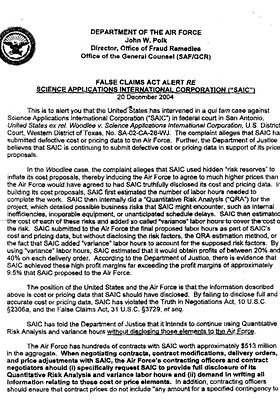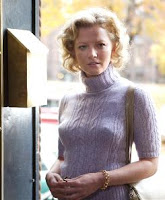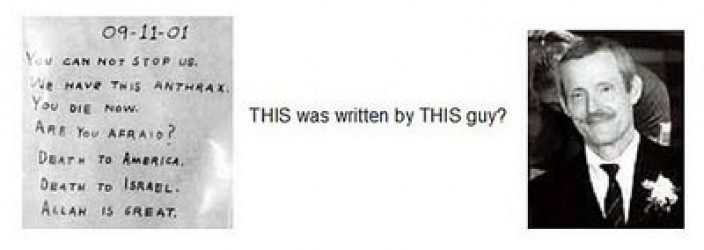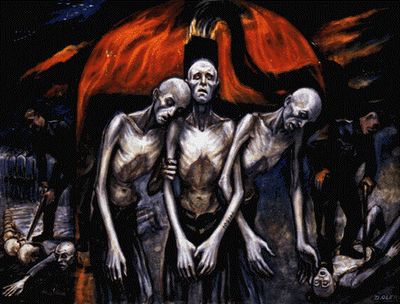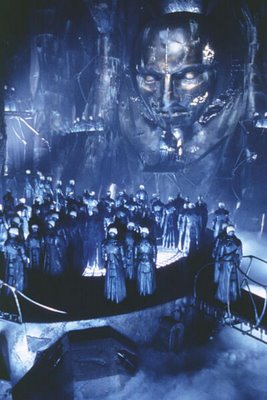Alex Constantine - November 10, 2008
Pavel Sadko
22.10.2008
First installment
Today, the TV channel Rossiya will show the documentary film "TV for Hitler: The Failed Experiment." The filmmakers have allowed KP to share the most compelling segments of the program with our readers.
After the fall of Nazi Germany, World War II’s victors discovered evidence of a budding TV industry among the ruins of the Third Reich ― ranging from screenplays for talk shows to reels of educational and comedy programs. The Nazis had also developed culinary, exercise and children's TV shows, and even a family sitcom. The show followed the lives of an average married Nazi couple, and showed them talking, dining, arguing and kissing.
Goebells demanded that cable TV be created to ensure the shows would reach each German home. The plans for the industry were likely developed by the Nazi elite, who were interested in propagating the ideals of the Third Reich, and Tibetan monks, who hoped to spiritually enrich people around the world.
A new life!
The TV experiment may have been the result of the efforts of Tibetan monks who hoped to find a medium to reach the masses. But in January 1940, the Tibetans fell under the supervision of Goebbels’ department. He proceeded to issue a wide range of official orders to develop TV to benefit the Nazi cause.
Goebbels declared the need for a sharp increase in Germany's TV audience. Engineer Walter Bruch was tasked with drawing up a technical outline for the "people’s TV." The outline soon reached Hitler’s desk and was titled, "The Plan for Providing All German Homes with the People's TV Transmitter."
Simultaneously, the authorities began laying an enormous broadband TV cable between Berlin and Nuremburg. Goebbels tasked his wife Magda and Margarita Hesse with the organizational duties associated with creating TV lounges for women. He even agreed to water down the seriousness of the TV shows by throwing in the occasional artistic film.
In 1940, the Public Enlightenment and Propaganda Ministry divided Nazi TV shows into two distinct categories ― of a propagandizing and artistic nature.
TV Programs for Oct. 26, 1940
12.30. At noon in the work day. Message from the leader of the labor front.
14.00. News.
15.00. Footage from military feats.
17.00. "Wanted by the State Police".
18.30. Fuhrer's message.
21.00. News.
21.30. Poetry and sons from members of the German Youth Alliance.
22.00 Broadcasting ends with a prayer by members of the German Youth Alliance.
The production group that included Rudolph Hesse and Goebbels' wife proposed the following TV schedule. They guessed the structure of modern-day TV half a century ahead of time.
08.00. Rerun of the evening film, "Day of Love."
10.00. Meeting with actors of the film, "Day of Love." Discussion on the topic of "Men and Women."
11.30. Cooking program, "Learning to Cook Together."
Daytime: Music, family and educational programs, "Reading to the Kids", "Family Mosaic."
19.30. Evening film, "Atlantis."
21.00. Before bed. "Reading to Our Kids."
21.30. Pismo from the front.
22.00. Criminal news.
22.30. Family hour. "Family Mosaic."
Goebbels' resolution: "Splendid! If you were to sit and watch everything, what else would a simple person need? Why work or wage war? There's a whole world right here at home! It's nice to live in a world of illusions, isn't it? Your gun rusts away, and you're no longer much of a marksman."
Goebbels' wife Magda (on the photo with her daughters) was a producer of Hitler's TV.
Technical issues
A segment from a letter written by Goebbels to the producers of German TV, Magda and Margarita: "Don't worry about the technical side. Soon we'll have the necessary equipment! We'll be able to show whatever we want! We'll create the reality the German public needs. You're task is to teach German women to live in it."
Goebbels' message clearly shows that the experiment successfully reached the second, technical stage. Surely, the Tibetans from Lhasa hadn't arrived empty-handed.
A segment from a letter written by Margarita on Dec. 12, 1948: "It was spring of 1939... Rudolph told me my children and I would have another bodyguard. He said I should call him, 'Sakhib.' Sakhib brought some strange objects to our home. I didn't know their function at the time. Our son was the first to play with the 'toy.'"
The experiment had reached the decisive stage. The first, theoretical part was complete. The prototype for the future of the TV industry was born. Now it was time to learn how to use the new apparatus which was capable of quickly and qualitatively spinning a virtual reality for the homes of German families.
Tibet-Berlin Telebridge
Andrey Vasilchenko, Candidate of Historical Sciences, Writer:
"A result of Sheffer's expeditions was the installation of a radiobridge between Lhasa and Berlin. It allowed Hitler to maintain constant contact with the Dalai Lama."
In a letter from Aug. 2, 1972, Hesse remembered how Hitler shared his impressions of the appearance of the warden of Tibet: "... a strict, steel look," and "...an irony pulsating in the corners of his mouth."
Further down in the letter, Hesse wrote: "Soon I myself had the occasion to witness these incomparable, Eastern, contrasting facial expressions ― from fanatical spirituality to the sweetest cynicism."
What else can be concluded from Hesse's letter?! How could the fuhrer and his deputy have judged the changes in the expression on the Tibetan's face if they only had a radio?!
It seems as though the Third Reich built both a radio- and telebridge in Lhasa in 1942-1943. However, no traces of the technology were found. For example, after examining the Wewelsburg Castle, U.S. investigators found Himmler's TV room, but only one chair and an ordinary TV transmitter were inside.
Children of the Third Reich
"Who can most easily return to his roots? Of course those who haven't wandered far from them..." Himmler wrote in a note, and asked Sakhib to form a new group of students. This time, they were to be children. Himmler asked the leaders of the Third Reich to allow their children to be used for the experiment.
Henreich, Hesse's nephew: "Sakhib told me I can try to restore my historical proto-memory with his help while I'm still young. He asked me to get several of my friends together and to bring them to his place for our first lesson. I thought of Helga Goebbels... Who else? Maybe Crownsy, Reichskanzler [Martin] Bormann's son?"
Today ― Lesson One
"Sakhib is pleased. He promised to give me and Helga a gift," Heinrich wrote in a later letter.
Evidently, Sakhib gave the 12- and 14-year-old children the world’s first digital apparatus. The portable cameras ensured long-distance communication, just like modern-day mobile phones. They received the gifts as prizes, although they took part in the experiment unknowingly.
By helping to build the future of the TV industry, they hoped to advance the spiritual maturity of the people. They wanted to reprogram the consciousness of the Germans and help build a new, virtual world full of fantasies, art, music, sports and family values. Keeping the masses absorbed in a virtual world seemed to be a surefire way of precluding the possibility of future wars. The experiment was interrupted and failed. Today, the hypothesis has proven untrue.
http://orenburg.kp.ru/daily/24185/393655/

